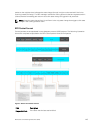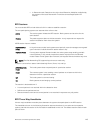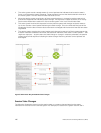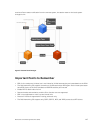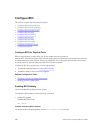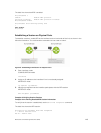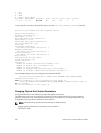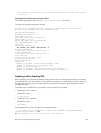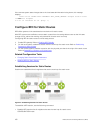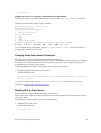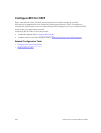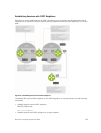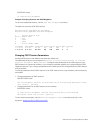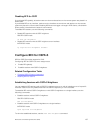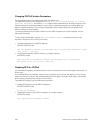
bfd interval milliseconds min_rx milliseconds multiplier value role [active
| passive]
Changing Session Parameters for Physical Ports
View session parameters using the show bfd neighbors detail command.
The bold line shows the parameter changes.
R1(conf-if-gi-4/24)#bfd interval 100 min_rx 100 multiplier 4 role passive
R1(conf-if-gi-4/24)#do show bfd neighbors detail
Session Discriminator: 1
Neighbor Discriminator: 1
Local Addr: 2.2.2.1
Local MAC Addr: 00:01:e8:09:c3:e5
Remote Addr: 2.2.2.2
Remote MAC Addr: 00:01:e8:06:95:a2
Int: GigabitEthernet 4/24
State: Up
Configured parameters:
TX: 100ms, RX: 100ms, Multiplier: 4
Neighbor parameters:
TX: 100ms, RX: 100ms, Multiplier: 3
Actual parameters:
TX: 100ms, RX: 100ms, Multiplier: 4
Role: Passive
Delete session on Down: False
Client Registered: CLI
Uptime: 00:09:06
Statistics:
Number of packets received from neighbor: 4092
Number of packets sent to neighbor: 4093
Number of state changes: 1
Number of messages from IFA about port state change: 0
Number of messages communicated b/w Manager and Agent:
7
Disabling and Re-Enabling BFD
BFD is enabled on all interfaces by default, though sessions are not created unless explicitly configured.
If you disable BFD, all of the sessions on that interface are placed in an Administratively Down state ( the
first message example), and the remote systems are notified of the session state change (the second
message example).
To disable and re-enable BFD on an interface, use the following commands.
• Disable BFD on an interface.
INTERFACE mode
no bfd enable
• Enable BFD on an interface.
INTERFACE mode
bfd enable
If you disable BFD on a local interface, this message displays:
R1(conf-if-gi-4/24)#01:00:52: %RPM0-P:RP2 %BFDMGR-1-BFD_STATE_CHANGE:
Changed session state to
Ad
Dn for neighbor 2.2.2.2 on interface Gi 4/24 (diag: 0)
Bidirectional Forwarding Detection (BFD)
151



